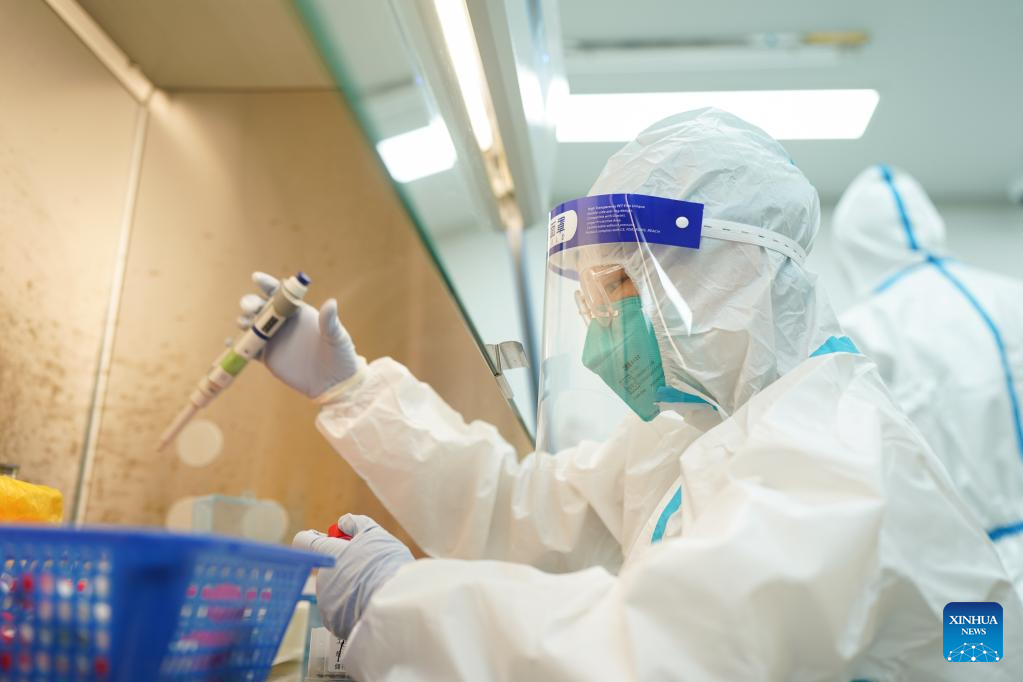Myths vs facts: Zooming into China's dynamic zero-COVID approach through FAQs

BEIJING -- Several parts of China are battling a COVID-19 resurgence attributable to the Omicron variant with tens of thousands of new infections reported a day.
In the face of this grave situation, it is the need of the hour for the world's most populous country to adhere to its dynamic zero-COVID policy. However, some Western media outlets have expressed renewed skepticism about China's epidemic containment approach.
Here are some frequently asked questions (FAQs) that convey China's perspective on its fight against COVID-19 and help dispel the myths about the country's anti-epidemic strategy.
-- Is it time for China to forsake the dynamic zero-COVID policy?
No. The policy remains the optimal choice for China to timely contain the outbreaks at the present stage.
Policymakers in the country hold that people's lives are invaluable and not a tradable option. For a country with more than 1.4 billion people, hasty and premature relaxation of the dynamic zero-COVID policy would only bring risks.
Statistics show that Omicron is not influenza. Analyses of the latest outbreaks in northeast China's Jilin Province indicate that the strain is particularly lethal for those with advanced age or severe underlying conditions. Compared to its predecessors, Omicron is more transmissible and stealthy.
In a country with 267 million people aged 60 or above and where more than 50 million elderly people have yet to be fully vaccinated against the virus, lowering the guard against COVID-19 will wreak havoc.
China has continued to explore epidemic prevention and control tactics and tweak them in line with the changing ground situation as well as the latest information on the virus.
-- Is China's dynamic zero-COVID policy a hindrance to global supply chains?
Quite the opposite in fact.
Over the past two-plus years, the policy, featuring swift response, mass screening and large-scale vaccination, has ensured that China's factories can deliver products ranging from face masks to iPhones to consumers worldwide.
Thanks to the early work resumption made possible by the stringent anti-epidemic efforts, China's foreign trade value exceeded 6 trillion U.S. dollars for the first time in 2021 when the pandemic was still weighing on global trade.
Had it not been for China's zero-COVID policy that is helping ensure manufacturing capacity and continuous flow of commodities, shortages of goods would have long bitten into essentials, nudging up retail prices in Walmart and Tesco stores and increasing inflation, thus impeding the already shaky global economic recovery.
Shanghai, an important link in the global supply chain, has never imposed what Western media reportage described as a "lockdown." While traffic has been reduced due to the outbreaks, the Port of Shanghai has continued to operate round-the-clock.
The Shanghai International Energy Exchange has largely remained unscathed in the face of the latest outbreaks. It is serving investors from more than 20 countries and regions on six continents.
-- Does China's dynamic zero-COVID policy aim for zero infections?
The policy does not seek to pursue zero infections, rather it calls for measures to bring outbreaks under control in the shortest possible time.
China seeks to minimize the impact of the epidemic by adhering to the dynamic zero-COVID approach. Precision is the essence of the approach. This involves precise identification of the infected, their close contacts and secondary contacts to head off possible insidious transmission of the virus. It is followed by tailored treatments.
Shanghai is striving to bring infection sources under control, cut off the transmission routes, and protect the vulnerable. And this strategy has been proved effective in earlier battles against Omicron.
-- Is the dynamic zero-COVID policy jeopardizing China's economy?
China is sparing no efforts in striking a balance between epidemic response and economic and social development.
Earlier this week, Chinese Premier Li Keqiang highlighted the strong resilience of the Chinese economy, encouraging targeted support measures for sectors and firms facing difficulties.
As the past two years have demonstrated, temporary and isolated shutdowns don't mean people stop working. On the contrary, such an approach has ensured low mortality since the start of the epidemic and propelled China's economic recovery at an accelerated pace than that of other countries.
The country was the world's first major economy to recover from the COVID-19 impact in 2020, with stable growth of 8.1 percent in 2021.
Despite the onslaughts of Omicron, China continues to see strong support and conditions favorable for continued growth. As the epidemic gradually wanes, the country will be able to contribute significantly more to global recovery.
Please feel free to contact us by sending your questions to question@chinadaily.com.cn or commenting on China Daily app. We will ask experts to answer them.














